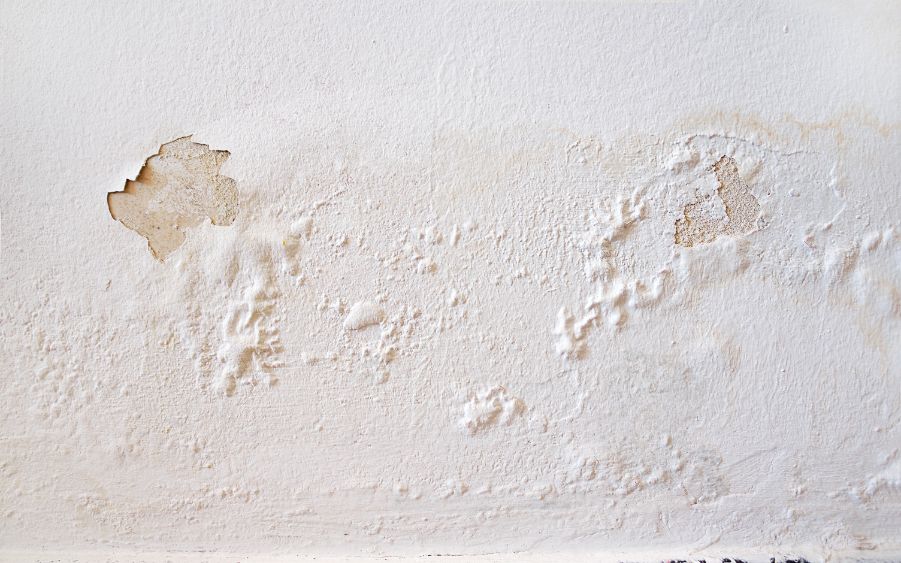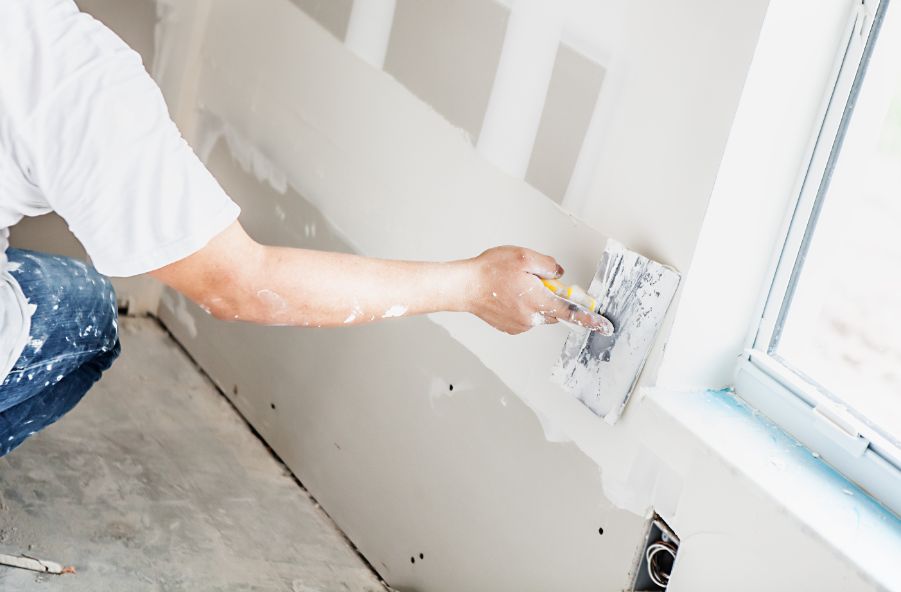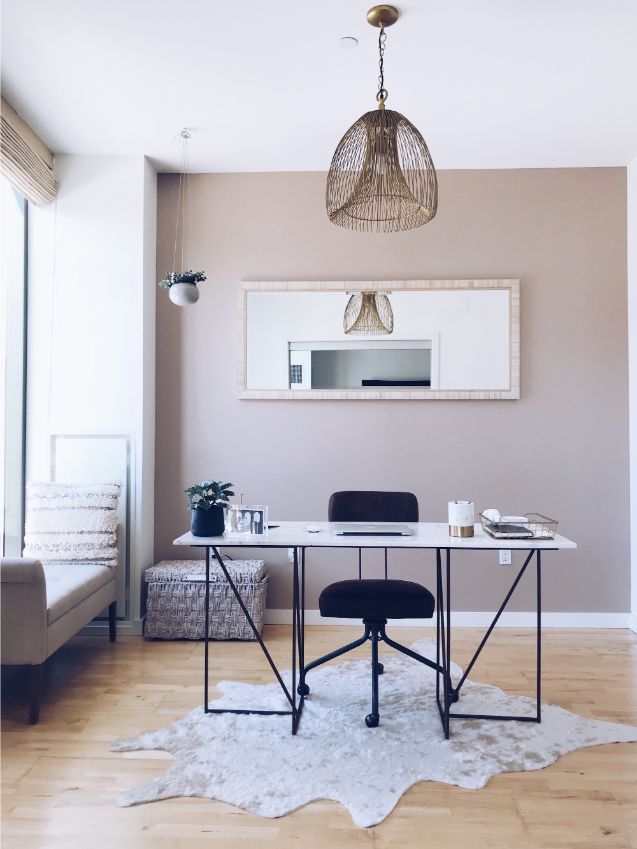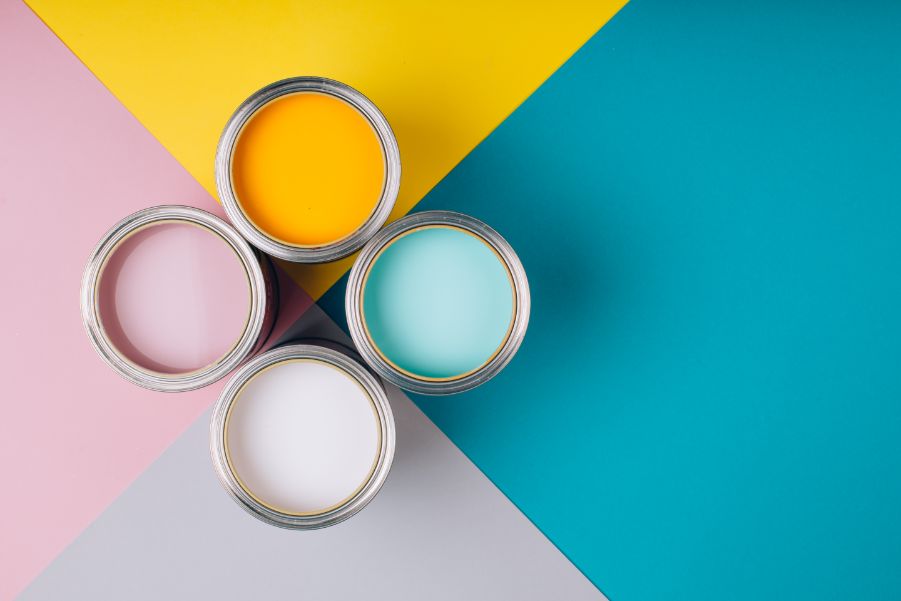How to Fix Paint Bubbling

After spending hours rolling paint on a wall, the last thing you want to do is wake up one morning and see paint bubbles. What causes paint bubbling and peeling, anyway? Here are the sources of this frustrating, unsightly problem, how to prevent it, and how to fix it if it’s already happened.
The Power of Adhesion
Paint bubbling, sometimes called blistering, happens when paint loses its adhesion to the surface beneath. That surface might be the coat of paint under the one you applied, or the substrate, like drywall, plaster or wood.
When paint pulls away, water- or air-filled bubbles form, and when they deflate as the paint dries, they can harden in place. Paint coats – both oil- and water-based – can loosen at any time, even long after the paint was applied.
You could paint over it again, but that’s a short-term solution because the paint will likely re-bubble. Instead, here’s how you can stop it – or repair it.
Paint Bubbling 101
Here are five reasons paint bubbles.
-
Dirty walls
If you’ve ever wondered why every painting instruction manual starts with “clean the walls,” this is why. No matter how expert you are at housekeeping, dirt, grime, and dust are going to stick to your walls and ceilings. And they get in the way of fresh paint’s ability to adhere to a wall or ceiling. So, before you paint, clean the surface thoroughly with a damp, soapy sponge, then let the surface air dry completely before painting.
-
Skipping the primer
Primer, who needs it, right? Well, your walls do. Primer isn’t just the paint industry’s attempt to sell you another product. A layer of primer creates a less porous surface so that both binders and pigments can stick to the substrate. In other words, it gives your paint something to stick to.
-
Moisture
Moisture from water droplets, leaks, or high humidity, can all soak into the wall, creating bubbles between the wall and the paint. These types of bubbles happen in rooms where dampness is common, like bathrooms and kitchens.
-
Heat
As with moisture, this is more common in rooms exposed to heat, like kitchens or rooms that get a lot of sunlight. This isn’t so much a problem of adherence as it is an issue of drying. In intemperate places, the topcoat dries unevenly at a too-fast rate and causes bubbles under the surface.
-
Using the wrong technique, tools, or paint
When painting over oil-based paint, it’s generally best to use more oil-based paint. Putting latex paint over oil-based paint is likely to cause the paint to bubble because the two formulas can’t bond well. But latex has some benefits over oil-based paint – mainly lower VOCs, lower odor, and faster drying time. So, if you want to paint latex over oil, you’ll need to prep the oil-based paint first by sanding the paint to rough up the surface, cleaning it with TSP, priming, and then using at least two coats of latex. And be sure to use the right brush or roller – if you’re not sure of the right tool for you paint job, ask your paint professional.
Repairing Bubbled Paint
If you’re faced with blistered paint, how do you fix it? Luckily, this is easy, if a little time-consuming.
First, scrape away the bumps or cracks with a putty knife. Then fill any holes or cracks in the surface with a patching compound. Once the compound is dry (usually overnight), lightly sand with a fine-grit sandpaper. Then clean the surface, let it dry completely, prime it, and paint in the appropriate conditions – between 50-85 degrees F, in a well-ventilated room.
Learn more about our house painting services, get a free quote, or browse our Color Tool to find gorgeous, trending paint colors for your home.



